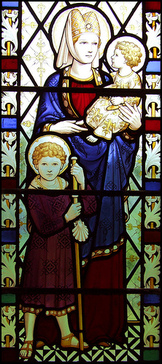
This saint was present at the foot of the Cross and is named with the women listed in Mark 15:40: "Among them were Mary Magdalene, Mary the mother of the younger James (Saint James the Less) and of Joses, and Salome".
Saint Mary Salome was also one of the women who visited the tomb of Jesus on the morning of Easter Sunday. "When the Sabbath was over, Mary Magdalene, Mary, the mother of James [the younger], and Salome brought spices so that they might go and anoint Him" (Mark 16:1).
Saint Mary Salome is not mentioned in the Acts of the Apostles and there is no further historical record of her. There is a tradition that, after the Resurrection of Jesus, Mary Salome went to Veroli, Italy where she preached the Gospel and miraculously avoided persecution.
She is sometimes referred to as one of the Three Marys. The Three Marys is a historical term for the three women, Mary Magdalene, Mary the wife of Cleopas, and Mary Salome, who brought herbs and spices to the tomb of Jesus.
Interestingly, the verses about the mother of James and John is mentioned are the only times when the name "Salome" is mentioned in the Bible. The Salome who demanded the head of Saint John the Baptist is mentioned only as the "daughter of Herodias" (Matthew 14:6 and Mark 6:22). She is named only in a history written by Josephus (37-c. 100).
Saint Mary Salome is considered the patron saint of Veroli, Italy. She is venerated by both the Eastern Orthodox Church and the Roman Catholic Church. In the latter, her feast day is October 22.




